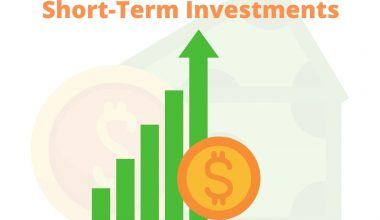Traditional financing alternatives might not always be the best choice for everyone when it comes to buying a property. This is where portfolio loans come in. A portfolio loan is a mortgage that is held by the originator who originated it, as opposed to being sold to an outside investor. It is a flexible option for those who may not satisfy the stringent requirements of conventional loans and can offer more individualized terms and conditions.
Are you looking for loan options? This article will explain a portfolio loan, how it works, and who qualifies for it. Also, we will go over portfolio loan lenders, rental, and real estate portfolio loans.
What is a Portfolio Loan
A type of mortgage loan known as a portfolio loan is one that the lending institution holds rather than selling on the secondary mortgage market. These loans are often made available by community banks and credit unions that operate on a smaller scale.
Borrowers who do not meet the qualifications for a conventional mortgage loan or who wish to finance many homes using a single mortgage may find that portfolio loans are an option that works to their advantage. They might provide more leeway in the underwriting process, enabling lenders to determine their own qualifying standards and the terms of loans on their own. Borrowers with less-than-perfect credit or those unable to meet the severe requirements of conventional loans may find portfolio loans to be a more enticing option as a result.
How Does Portfolio Loan Work?
Portfolio loans are often more flexible than conventional ones, as lenders can set their qualification guidelines and terms. This can make them more appealing to certain borrowers, such as those with non-conforming financial situations or those who don’t meet conventional lending criteria. This type of loan can offer. However, as the loan offers more flexibility and options for borrowers, they may also come with higher fees and interest charges. This is due to the increased risk that lenders take on by retaining the loan on their balance sheet.
For borrowers, obtaining a portfolio loan is similar to a conventional loan, involving an application, underwriting, negotiation of terms, and closing. However, there might be some differences in the application process, such as additional steps required in underwriting.
It’s important to weigh the pros and cons of a portfolio loan based on your specific financial situation and needs before deciding if it’s the right option for you.
What Is the Purpose of a Portfolio Loan?
Portfolio loans help borrowers with a greater debt-to-income ratio, self-employment, or other unconventional income sources qualify for conventional loans. Also. for those who have trouble getting a conventional mortgage, these loans may have more liberal underwriting.
Furthermore, portfolio loans help real estate investors with property investment by enabling the investors to extend their portfolios. Portfolio lenders do not limit the number of properties an investor can buy, unlike traditional lenders, who may not finance more than a certain number. Portfolio lenders can finance homes that need extensive remodeling because they don’t need a minimum condition.
Also, portfolio lenders may issue loans for borrowers with poor credit or income, resulting in greater loan-to-value (LTV) ratios. Borrowers can refinance or finance a bigger share of the home’s purchase price, enhancing their buying power.
Who Can Benefit From a Portfolio Loan?
Portfolio loans can benefit various types of borrowers who face challenges in obtaining conventional loans due to poor credit, bankruptcy, foreclosure, or other unique circumstances. Some specific borrowers who can benefit from portfolio loans include:
- Borrowers with bad credit scores or high DTI: Those whose finances were momentarily derailed by unemployment or other financial troubles and didn’t meet normal mortgage conditions.
- High earners with low credit scores: Borrowers with high-paying jobs but issues making monthly payments on time.
- Self-employed or freelance borrowers: Borrowers with sufficient credit scores and assets but lacking steady income.
- Good customers of the lender: Lenders may offer portfolio loans to their best, most reliable borrowers or to someone they want to have a better relationship with, like a local business owner.
- Buyers who need a larger loan: Borrowers who need a loan amount larger than they qualify for or need a mortgage larger than a jumbo loan.
- Real estate investors: Portfolio loans allow investors to buy more properties and may not require them to be in good shape.
Pros of a Portfolio loan
- Portfolio lenders can accept borrowers with poor credit more.
- Portfolio loans may be more accessible to real estate investors or self-employed people with variable income.
- You might be able to secure a bigger loan with less money down than a conventional mortgage.
- Portfolio lenders can structure each loan on a case-by-case basis, offering more flexibility than conventional loans.
- Lenders and borrowers can collaborate closely, building a positive connection and possibly assisting one another with future loan or investment applications.
Cons of Portfolio Loans
- Portfolio lenders tend to charge higher interest rates and higher origination fees to compensate for their increased risk.
- There may be prepayment penalties and origination fees.
- Not all lenders offer portfolio loans; you may need to have an existing banking relationship to qualify for one.
- In case of default, the lender has 100% liability.
Portfolio Loan Lenders
A portfolio loan lender is a bank or other financial organization that makes mortgage loans and maintains the debt in its portfolio instead of reselling it on the secondary market. Although these lenders might provide consumers with more options, they are frequently more expensive and have higher interest rates.
Small, independently operated community banks with greater flexibility than bigger financial institutions are frequently portfolio lenders. They are free to establish their own qualification standards and conditions, which may be attractive to certain types of borrowers, such as those requiring jumbo loans or purchasing investment properties.
Types of Portfolio Loan Lenders
Portfolio loan lenders include the following:
- Banks and financial institutions: Traditional lenders offer portfolio loans to investment property owners and other tailored borrowers. However, they may have certain borrower qualifications.
- Direct lenders: These lenders make direct portfolio loans to borrowers. Examples include banks and credit unions.
- Secondary market lenders: These lenders repackage traditional mortgages from banks and other financial institutions for secondary market selling. Examples include Fannie Mae and Freddie Mac.
- Specialist lenders: Investment property owners and people with particular financial needs can get portfolio loans from these lenders. Examples include Axos Bank, FNBA, and Citadel Servicing Corporation.
- High street banks and more specialist lenders: These lenders offer buy-to-let portfolio mortgages. Examples include Barclays offering 75% LTV on loans up to £1 million and 60% on loans from £1-2 million.
Each of these portfolio loan lenders has its pros and cons:
- Banks and financial institutions typically have a wide range of loan products but may have stricter qualification requirements.
- Direct lenders may offer more flexibility but may also have limited product offerings.
- Secondary market lenders can provide more competitive rates due to their size and expertise but may have less flexibility in loan terms.
- Specialist lenders can offer customized solutions for specific borrower segments but may have limited reach.
- High street banks and more specialist lenders may offer a balance between flexibility and competitive rates but may have varying terms and criteria.
Portfolio Loan Requirements
Requirements for obtaining a portfolio loan include the following:
- Credit Score: The minimum credit score required for a Portfolio Loan is typically 620, although some lenders may require a score of 680.
- Down Payment: Usually, the minimum down payment for a portfolio loan is around 20% of the total purchase price.
- Loan Amounts: Portfolio loans can be larger than the conforming limit set for the state.
- Property Conditions: Portfolio loans can be used to finance properties with specific conditions that may not qualify for traditional loans.
Portfolio Loan Real Estate
A bank that issues portfolio loans to real estate investors keeps the loan on its balance sheet (i.e., in its own portfolio) rather than selling it to a quasi-government organization like Fannie Mae, Freddie Mac, or the VA.
Portfolio loans are particularly advantageous for real estate investors looking to expand their property portfolio. This is because portfolio loan lenders typically don’t place a cap on the number of properties a real estate investor can purchase. They also don’t always require the property to be in a minimum condition, making them suitable for investors who want to finance the purchase of a property that needs considerable renovation.
As a real estate investor, to qualify for a portfolio loan, you’ll likely have to search out mortgage lenders that offer them, such as local banks, credit unions, and online lenders. Once you’ve located lenders that are set up to provide portfolio loans, find out their specific application process and requirements. Working with a mortgage broker may be the best way to locate the type of lender you prefer, and a local bank or credit union may be more likely to offer portfolio loans than a big retail bank.
A portfolio loan may be more accessible to real estate investors or self-employed people with variable income. Furthermore, a real estate investor might be able to secure a bigger loan with less money down than a conventional mortgage.
However, portfolio loan lenders tend to charge higher interest rates to compensate for their increased risk, which might disadvantage a real estate investor.
Rental Portfolio Loan
A rental portfolio loan is a mortgage designed for investors who own multiple properties. It allows investors to refinance their existing mortgages and consolidate them into a single loan, simplifying the management of their overall debt burden and potentially saving money on interest payments.
To qualify for a rental portfolio loan, borrowers usually need to have good credit, a strong track record of successful property management, and enough equity in their rental properties. In addition to this, it is essential that you compare interest rates offered by a variety of lenders, negotiate the terms of the loan, and keep the loan-to-value (LTV) ratio as low as possible.
A loan for a rental portfolio may come in various types, including fixed-rate and adjustable-rate loans. The interest rate on a loan with a fixed rate remains the same throughout the life of the loan, but the interest rate on a loan with an adjustable rate is subject to change over time, depending on the conditions of the market.
To maximize a rental portfolio loan, investors should consider keeping the loan term as short as possible, making a higher down payment if possible, and refinancing the loan when interest rates decrease.
Are Portfolio Loans a Good Idea?
For some borrowers who cannot obtain conventional loans, such as those with less-than-perfect credit, those who are self-employed, or those with high debt-to-income ratios, portfolio loans may be a good option. Instead of being sold on the secondary market, the lender retains these loans, allowing for more lenient underwriting guidelines and perhaps better conditions for the borrower.
Prior to determining whether a portfolio loan is appropriate for your case, it is crucial to assess the advantages and disadvantages and talk with a financial expert or mortgage broker.
Who Qualifies for Portfolio Loans?
Five types of individuals can qualify for portfolio loans:
- Self-employed individuals
- Individuals with damaged credit history.
- High-net-worth individuals
- Individuals with a High debt-to-income ratio
- Real estate investors
Are Portfolio Loans Risky?
Portfolio loans can be considered riskier than conventional loans due to several reasons. Portfolio lenders often charge higher interest rates to compensate for the increased risk associated with the loan, and it may have additional fees such as prepayment penalties and origination fees.
Also, portfolio loans are not sold on the secondary market, meaning the lender risks losing money if the borrower defaults. This can make the loan more risky for the lender. Because of less strict credit requirements, the risk for the lenders increases, as they may be more likely to extend loans to borrowers with poor credit or other risk factors.
Related Articles
- PROJECT PORTFOLIO: Meaning, How to Create It, Software, Management & Manager
- PROJECT PORTFOLIO MANAGEMENT: Meaning, Top Software, Processes & Benefits
- PORTFOLIO MANAGEMENT SOFTWARE: Top Investment Software In 2023






